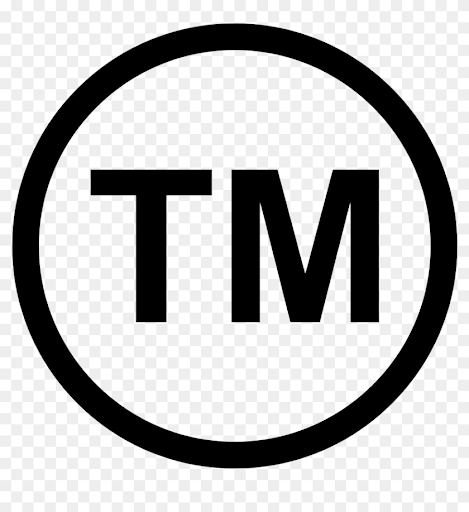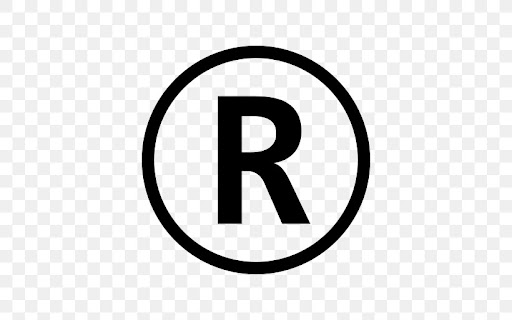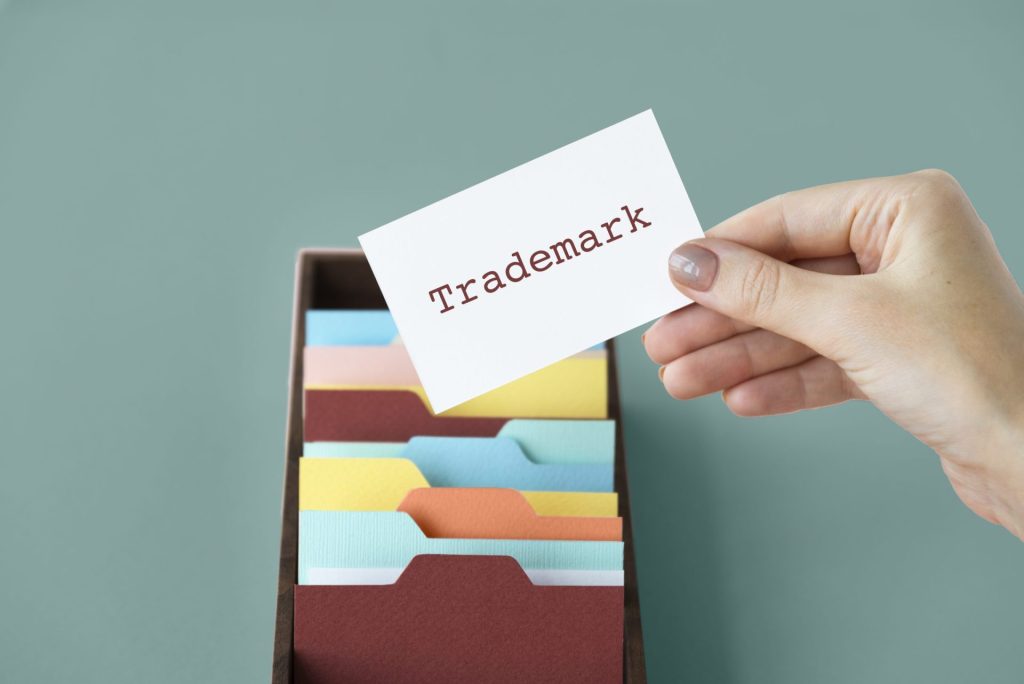One of the most important parts of your brand that you will create is your logo. They are the symbol that represents you and your company and is one of the first things that a customer sees, allowing them to make an accurate impression of your group.
You’ve just created your new logo for your business or you have been using your logo for some time now. You spent a ton of energy either making that logo yourself from scratch or with a template or you spent a lot of time finding the right artist to render this wonderful creation for you.
Now that you have your logo, you are concerned about keeping it protected and making sure that no one steals it. You consider trademarking your logo in order to protect it.
What does that mean? Why should you get your logo trademarked? And what does that process look like? To learn the answers about this subject matter, keep reading.
It can be concerning as you try to understand what is required of your logo and how to properly protect it. Do not fret, we are here to help you get through it.
The following information is conclusions drawn by viewing information from the United States Patent and Trademark Office website information. A certified law firm or attorney should be spoken to for legal advice on this matter. You can also contact the USPTO with any questions that you may have over this process or otherwise.
What is a Trademark?
The United States Patent and Trademark Office (USPTO) describes a trademark as anything that can identify your goods or services. These could be phrases, words, designs, symbols, or a combination of these. These trademarks are how you can be distinguished from your competitors in the marketplace which determines if customers recognize you or not.
The USPTO goes on to say that having your trademark helps protect you legally because you are claiming that trademark. This keeps it from being forged or used illegally.
Seems simple enough. You represent your services or goods through a symbol that is your logo. Technically, the word ‘trademark’ is used to represent goods while the word ‘service mark’ is for services but ‘trademark’ can be used to represent both.
Common Misconception
One thing about trademarks that is typically confused is how the trademark works. When you have a trademark over words, you don’t own those words entirely, only how they are connected to you.
Your window cleaning business can have a sponge logo trademarked. This means that others in your trade and industry can’t use anything similar but someone in a different field, like dog washing, could. You can’t be the only person with a sponge logo in that specific design but you can in your service field.
Difference Between Trademark, Patent, and Copyright
Trademark:
A trademark legally protects a word, phrase, design, or combination of those three items that represent your company and the goods or services that you provide. Typical items that are trademarked are logos, slogans, and branding elements within your design. Trademarking them makes it so that no one can have a similar version in your industry.
Patent:
A patent legally protects inventions that are new and creative in their industry. This could be a new drug or piece of machinery. If your idea is patented, it keeps it protected and is less likely to be stolen by anyone else.
Copyright:
Copyright legally protects “artistic, literary, or intellectually created works.” This could be a painting, book, song, photograph, software code, and much more. Having copyright makes it so that no one can recreate your work and claim it as their own.
The Trademark Symbol

You can use the trademark symbol as soon as you are using your logo. Even if your logo is not yet a registered trademark, you can use “TM’ or ‘SM’ beside your logo to let others know that this trademark is yours.
If you register your trademark, then you are allowed to put the ® beside your logo. Your logo must be registered in order to use this symbol.
Having a Strong Trademark
When you are trying to trademark something, there is a range between strong and weak that it can fall in. Having your trademark as strong as possible is ideal. Doing this will provide more protection for your brand.
Strong:
Strong words are words that don’t have a connection to your product. These are arbitrary trademarks.
An example of this would be the company Amazon. They started as an online bookstore, but they took the name of the Amazon rainforest or river. Because there is no actual connection prior to the company using this name, it works well as a trademark and is acceptable.
Another acceptable type of trademark is the fanciful trademark. These are made-up words to describe something.
An example of this is Kleenex for facial tissues. The word ‘kleenex’ didn’t exist prior to this company using it. It would be very obvious if another company tried to steal this name.
The last type of strong, acceptable trademark is a suggestive trademark. These suggest the service or good provided by the company but they do not suggest it outright.
An example of this is Netflix being a movie and show streaming service. It sounds and resembles the word ‘flicks’ and you can make the connection of ‘net’ to ‘internet’ which is more realistic of how they operate today.
Weak:
Weak trademarks are not able to be registered because they are too generic and descriptive which makes them hard to protect. These are unacceptable trademarks.
Descriptive trademarks are unacceptable because they directly describe the service or good that is being provided by the company. They are difficult to protect because anyone can use descriptive language in connection to a company. Overall, wreak trademarks will not be registered except for very rare circumstances.
Naming your bakery “Doughy” or naming your soda shop “Bubbly” would be examples of this. Suggestive trademarks differ from this because they allude to the good or service but do not directly describe it.
The other type of weak trademark is the generic trademark. These are using the name of your good as your trademark, which technically makes it unable to qualify as a trademark. These are not able to be registered.
An example of this would be naming your car wash ‘Car Wash’ or naming your computer company ‘Computer.’
How do Determine if You Need to Register your Trademark?

Just by using your logo, you are a trademark owner. Within your geographical area, you have the right to your logo because you are using it with your goods or services. However, this ownership only goes so far. If you decide to take your product to a different country, and you want more rights and protections for your logo, then you should register it.
You don’t have to register your logo, but if you don’t and you start operating out of your normal area, then your logo is not protected.
Registering your trademark has many benefits. One of them is that once your trademark is registered, it gets put into the official database. This means that the general public can look up your trademark and see that it is already taken by you.
Having a registered trademark gives a great amount of evidence that you are the owner. If you ever have to go to court over your trademark, this can be very helpful and make it that much easier for you to win.
Registering can make the process of trademarking in other countries that much easier.
If you have a concern about your trademark, you can bring it to federal court in a lawsuit.
You can use the registered symbol ® as soon as your trademark is officially registered. This can help deter others from using your trademarked items.
You can also register your registered trademark with the U.S. Customs and Border Protection in order to keep goods with similar trademarks from entering.
Different Trademark Formats
If you have multiple different versions of your logo, it is not a bad idea to trademark all versions of it.
A standard character format trademark is for the words, letters, and numbers themselves. It doesn’t matter how they are displayed, just that the specific characters are used. This is the most common type of trademark. An example of this is “Mcdonald’s ®.”
A special form format trademark is for stylized or colored designs and logos. That specific look is very important to your company and so that specific stylization is what you are trademarking rather than just the words themselves. An example is McDonald’s golden arch logo.
How to Register your Trademarked Logo?
Deciding if you want to register your trademark is up to you. You will be most protected if you do, but under common law rights, you might not even need to.
Common Law Rights
You can only have trademark protection in your geographical area if you go by common law rights. This does not protect your trademark anywhere else outside of your area and keeps your ability to enforce this trademark within your region as well.
If you decide to go ahead and register your trademark, you will need to decide on what type of registration you will need. These are determined by where you will be using your trademark.
Registration of a State Trademark
One option for registration is to go through your state. That means that within the borders, your trademark is protected but you are restricted to state borders.
If you want to expand to a different state, you have the option of registering your trademark in that state or getting a federal registration that protects you across the whole country. One thing to keep in mind is that not every state has a database for third parties to look up previously registered trademarks.
Registration of a Federal Trademark
Registering federally through the USPTO grants you rights in all the states and territories of the United States. Your trademark will also be listed in their public database and you can use the registered symbol ®.
The USPTO does not, however, enforce trademarks. You will have to do that yourself.
In order to maintain your federal trademark, you must continue to use it and provide documentation and fees at the required times in order to maintain your registration.
Your trademark can be registered forever as long as you maintain the requirements set forth by the USPTO.
Registration of an International Trademark
You cannot have a worldwide trademark but you can apply to register your trademark in multiple countries. The Madrid Protocol creates an easier way for you to register in many countries. They have over one hundred member countries that this works for.
This does not guarantee that you will receive the trademark as each country must review your application and go from there.
Do You Need an Attorney?

In some cases, you do not need an attorney in order to register your trademark through USPTO. However, an attorney is recommended.
You must file with a domicile address in order for the USPTO to determine if you need an attorney and whether you have decided to use one or not.
If you have a foreign domicile, then you will have to use an attorney in order to have an appropriate address.
The benefits of using an attorney include:
- providing you legal advice
- searching to clear your logo before applying for a registration
- preparing your application accuratly
- responding to the USPTO
- concerning your trademark rights, they will enforce or maintain
- appearing at the USPTO’s Trademark Trial and Appeal Board for you
- helping you avoid fraudulent solicitations
While you will have to pay more fees as well as the cost of the attorney if you use one, it is the safest route and might save you money due to everything being filed correctly.
The USPTO recommends against using companies that say they will file for you. Trademark filing companies and law firm companies are not the same things.
The Time it Takes to Register
The process of registering your trademark can be lengthy. Your trademark might be rejected and it could be for any number of reasons but they will provide time for your to fix those problems.
The usual time for a trademark to become registered is twelve to eighteen months. You can check out the current processing wait times on the USPTO’s website.
The process takes so long because of the in-depth steps required.
Your timeline will be based on a few things. The first thing is the circumstances around your filling.
Are you already using your trademark?
Are you planning to use your trademark in the near future?
Do you own an earlier-filed foreign application?
Do you own a foreign registration of the trademark?
Are you filing under the Madrid Protocol?
Based on what route you are taking will determine how long your process will take. On the USPTO’s website, they have timelines broken down for each of these options. These timelines layout how approximately long it takes for each step.
As always, if you file inaccurately or have other hang-ups, this could cause your application and registration process to go longer.
The USPTO will reach out if there is a problem with your application. They will drop your application and consider it abandoned if you do not respond within their set amount of time.
Getting Ready to Register
Mark:
When registering, you will be providing the mark that you want to use. You need to make sure that it is in fact registrable and that it will be easy to protect.
All that is left to do is determine your mark format.
Goods/Services:
When applying, you have to be very precise in what goods or services you provide.
Searching:
Make sure to search the USPTO database in order to see if there is already a similar trademark registered. If there is, your registration will probably not be accepted.
Filing Basis and Attorney:
You will have to know your basis for filing. And as previously mentioned, you might need an attorney.
Submitting Your Application

Now that you have everything ready, you can begin to submit your application. An online account through the USPTO will need to be made in order for you to apply.
You will fill out your online application through the Trademark Electronic Application System (TEAS).
There is a basic filing fee that you will have to pay. It costs $250 per class of goods/services for the TEAS Plus. It costs $350 per class of goods/services for the TEAS Standard.
Only one mark per registration is allowed. Your registration can fall into multiple different classes but you will have to pay additional fees for every additional good/service. There are also other additional fees that can be added.
These application fees are for filing. Paying the fee does not mean that your trademark will be accepted. If your trademark is not accepted you will lose the money.
Once your application is submitted, you must monitor it through their website. Check-in at least every six months in order to not miss anything. Keep your address or contact information up to date on your profile.
USPTO Examining Attorney
After your registration is seen to have met the minimum requirements, it will be given to an examining attorney. It is their job to make sure that your trademark meets a whole lot of other requirements.
If they find that it doesn’t meet the requirements, they will give an office action letter to you or your attorney which describes why you have been refused.
If you or your attorney receives a letter, you must respond within the deadline or your application will be dropped.
If the examining attorney finds no problems or you are able to fix all problems, then your trademark will be published in the “Official Gazette” which is published weekly by the USPTO. As soon as it has been published, there is a thirty-day period in which someone can oppose your trademark. If no one opposes or the opposition is unsuccessful, then your trademark can move to the next step.
After that, within six months you must file a statement of use (SOU). If you do not file it, or ask for an extension in time, then your application will be considered abandoned.
An examining attorney will view the SOU and let you know if there are any problems or if they will accept it. Within two months of them accepting your SOU, your trademark is registered.
Maintaining Your Registration
You must file specific maintenance documents to keep your registration ‘live.’ If you don’t your registration could expire or become canceled.
Continue to monitor your registration status and maintain or update your address and contact information. This will make sure that your registration stays ‘live’ and has no issues.
Having your trademark registered means that it is protected, however, the USPTO does not police or enforce this protection. It is up to you to enforce it. If you see something that might be infringing upon your registered mark, you can report them.
Creating a Logo to Register
Now that you know what it takes to register your trademark, you can get started on creating your very own logo.
Our logo creator helps save you money for your future registration because our application is free. Not only is it free, but it is easy to use and very timely.
The registration process for a trademark might take many months but having your logo created doesn’t have to. Hiring an artist could take more time to have a finished product but our logo creator allows you to have a finished logo in just a few steps.
First, enter your company’s name. Choose a department and an icon to represent your group. Last, change the colors, fonts, shapes, orientations, and much more of your logo through our editing platform. You can download your logo and get started using it today as soon as you are satisfied with it.
Please note that LogoCreator.io is not a legal service. This article is for informational reasons only and is not considered legal advice. These words are only statements, recommendations, and conclusions made by the author. LogoCreator.io is not responsible for this information or its accuracy.
Angela Irwin is a branding and design enthusiast with a Bachelor of Fine Arts in Graphic Design from Meadowbrook College. As a writer at Logocreator.io, she shares her expertise on logo design, graphic trends, and effective branding strategies, helping businesses create impactful visual identities.



